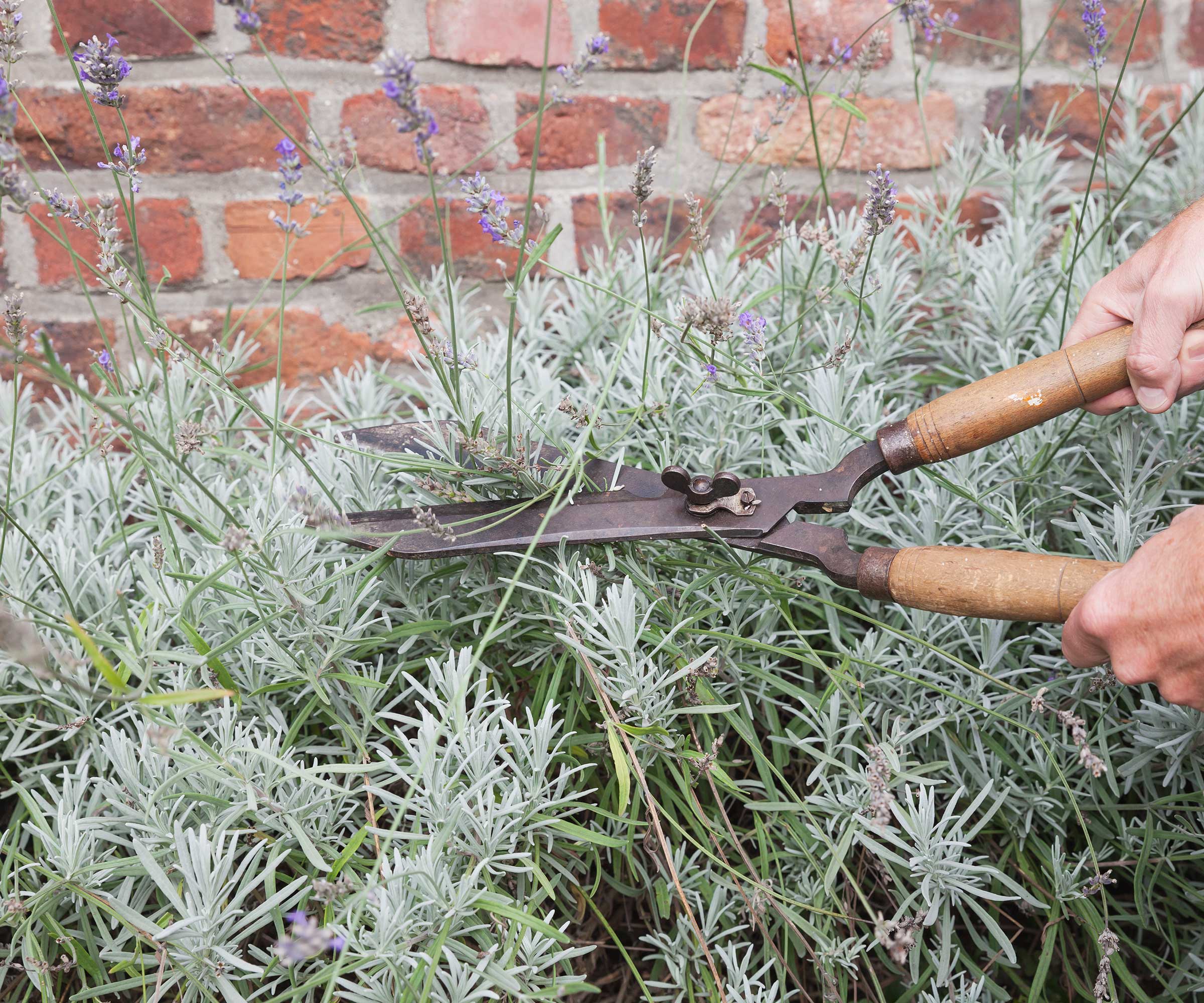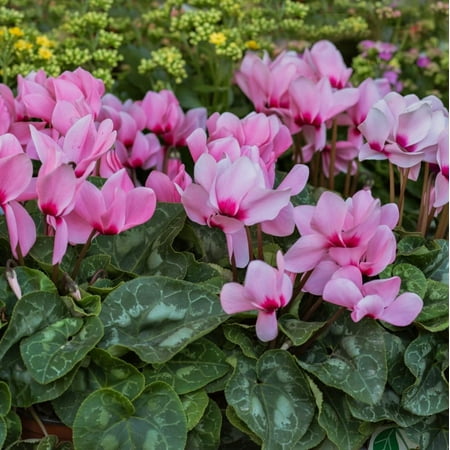How to create a winter sensory garden – for a calming, seasonal escape
Maintain interest in your yard by using aromatic evergreens and tranquil sounds


Thinking of the cold winter months needn't fill you with dread. To me, winter is a time of calm, the season to slow down and reflect. While the weather might restrict what you can grow or plant, there are ways to transform your outside space into a winter sensory garden.
Filling your borders with evergreens, aromatics, and wildlife will help to cast off the winter blues and provide a feast for the senses.
Many different winter garden trends can help to achieve a sensory space full of sound, movement and scent, and here, I share a handful of practical tips with advice from gardening experts on how to make the most of your yard and create a sensory space during the cold and dark months ahead.

How to create a winter sensory garden
If you are planning a winter garden or looking for winter garden ideas, the first consideration should always be your climate and US hardiness zone. While you might want to grow lots of different plants, if you live in cooler, northerly regions, such as New York, Portland or Chicago, it is wise to opt for hardy species that will survive frost and snow.
Any planting of evergreens, perennials, shrubs and trees is best done in fall or spring, but be sure to take some time to plan, thinking about what will look good in winter and provide a sensory moment as you walk through the yard.
1. Choose plants for texture

Texture and movement are important aspects when planning a garden, but are particularly important, I think, if you want a garden to maintain interest during December, January and February.
There are many ornamental grasses for winter interest that can add color and sound to your borders. Try planting switchgrass, or Panicum virgatum, for an architectural grass with brown-orange foliage in the fall and winter months. Native to North America, this hardy grass can be grown from US hardiness zone 3 plus, tolerating frozen winters and scorching summers.
Design expertise in your inbox – from inspiring decorating ideas and beautiful celebrity homes to practical gardening advice and shopping round-ups.
For a non-native option that can add color and sound to your yard, try planting Japanese forest grass, or Hakonechloa macra, which can be grown from US hardiness zone 5 to US hardiness zone 9. As you can see in the image above, golden-umber blades are particularly impressive from November onwards, and once established, large clumps make an impressive sound as the wind picks up. Japanese forest grass live plants are available from Walmart.
When growing ornamental grasses, I would suggest leaving your pruning until late winter or early spring. As a former professional gardener, I have found that grasses such as these really help to maintain interest and movement in borders until spring. I would always advise keeping your shears in the garden shed and leaving these ornamental plants to stand and sway through the winter months.
If you are growing grasses in pots on a patio or terrace, try planting some of the best winter flowers for pots underneath, such as heathers, skimmias or cyclamen, which can add pops of color while also providing nectar for any pollinators that are early to rise.
2. Grow aromatic evergreen plants

'For a sensory winter garden that’s enjoyable year-round, the best plants to grow are hardy, evergreen aromatic herbs that offer color, texture, and scent,' says Reese Robbins, garden expert and creator of Just Pure Gardening.
'Try rosemary for its needle-like foliage and pine scent,' Reese continues, 'or perhaps thyme for its low-growing carpet of green. One of my favorites is classic lavender, famed for its silvery leaves and calming aroma.
'These herbs retain their foliage year-round, adding structure to your garden even in winter,' Reese adds. 'Most perform best in US hardiness zone 6 to US hardiness zone 9, and there are many herbs that don't need winterizing, including sage and chives. In northern regions, however, it might be a good idea to complete a spot of mulching to provide added winter protection.' Use something like this pine bark mulch, available from Walmart, applying a thick two-inch layer that will keep the roots safe during the coldest time of the year.
'In general, you do not need to use frost cloths or cloches,' Reese, adds, although for tarragon or oregano, you might want to cover them during heavy snow in zone 3 or 4.'
One plant with silver foliage that is worth considering is Artemisia. 'Here in Central Oregon, we love the evergreen, blue-grey, velvety foliage of Artemisia, commonly referred to as sagebrush,' says Jennifer Curtis, plant expert and nursery manager at Schilling's Garden Market, Oregon.
'Sagebrush is remarkably drought tolerant and does well in nutrient-poor soil,' Jennifer adds. Growing best from zone 4 plus, use sagebrush as a silvery fragrant evergreen in pots or borders.'

Reese L. Robbins is the founder of Just Pure Gardening, a site full of fruit and vegetable growing guides, garden ideas, and garden product reviews.

Jennifer Curtis is a plant expert and nursery manager at Schilling's Garden Market, Bend, Oregon. Schilling's Garden Market is a boutique plant nursery specializing in specimen-quality dwarf confers, Japanese maples, the highest-quality of shrubs and unique perennials for your landscaping needs.
3. Enhance your outdoor space with sound and wildlife

Sound is important in the garden at any time of the year, although without leaves on the trees and with water features turned off, outside spaces can feel silent. While this quiet is not necessarily bad, it can be comforting to hear birdsong in winter.
Feeding birds in winter is certainly important, and learning how to support robins or how to care for woodpeckers in winter can help support wildlife and maintain sound and movement in your yard. While you might not be outside weeding in your borders, it can be comforting to watch on from the warmth of the home, following a songbird hop and dance across the yard.
As part of your winter gardening checklist, remember to provide a bird bath with access to water for birds. As the temperature drops, be sure to keep an eye on the water and break up any ice sheets when it drops below zero.
Bird feeders are available from Walmart, which are easy to set up and will quickly attract birds to your plot, including robins, woodpeckers and blue tits.
FAQs
What trees or shrubs are good for providing winter interest?
There are many shrubs and trees that can add color and form to outside spaces during winter. Why not learn how to grow witch hazel in pots, which will provide scent and spider-like blooms during January and February? Alternatively, many viburnums flower over winter, including Viburnum tinus. If planting in borders and beds, try underplanting with evergreen ground cover plants, such as Japanese spurge, which will keep your yard full of greenery year-round. Japanese spurge live plant can be ordered online from Walmart.
What bulbs could I plant to provide flowers in winter?
Bulbs are an ideal option for winter flowers. There are many bulb planting trends, but one species that never goes out of fashion is pure-white snowdrops. In terms of when to plant snowdrops bulbs, get them in the ground between September and November, and you should enjoy delicate white blooms from January to March for many years to come. Snowdrop bulbs are available from Walmart.
By blending scent, texture, and sound, you can create a serene winter sensory garden that thrives throughout the coldest months of the year, offering tranquility and a connection to nature at a time when it’s needed most.
It is also a good idea to add some lighting to your outside space during fall and winter. Even if you are not outside much during this time, using solar light along pergolas or uplighting trees can help to create interest and look impressive when viewed from the house. For more ideas, check out our garden wall lighting ideas to illuminate your yard during winter.

Thomas is a Content Editor within the Gardens Team at Homes and Gardens. He has worked as a professional gardener for both public spaces and private estates, specializing in productive gardening, growing food and flowers. Trained in Horticulture at the Garden Museum, he has written on gardening and garden history for various publications, including The English Garden, Gardens Illustrated, Hortus, The London Gardener and Bloom. He has co-authored a Lonely Planet travel book, The Tree Atlas, due out in 2024.

